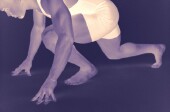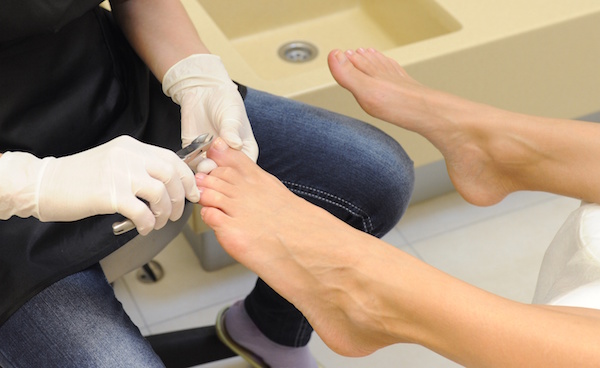
WEDNESDAY, Jan. 27 (HealthDay News) — If you just spent $100 on a fancy pair of running shoes, this news may hurt: A new study suggests that running barefoot is actually better for your body because of the way your feet land on the ground.
It’s not always feasible to run barefoot, of course. Even so, “the way barefoot runners use their feet and land may be a good alternative to the way many shod people run,” said study author Daniel Lieberman, a professor in Harvard University’s Department of Human Evolutionary Biology.
At issue is the way the foot strikes the ground when a person is running. Lieberman and colleagues studied runners from the United States and Kenya as they ran on tracks. All ran at least 20 kilometers (12.4 miles) a week, and those in Kenya were from the Rift Valley Province, whose residents are known for endurance running.
The study participants had different experiences with sports footwear. Some grew up in the United States and always wore shoes or wore shoes for a time and then turned to barefoot running with minimal footwear. Those from Kenya typically grew up barefoot but now wear cushioned shoes to run.
The researchers also looked at two groups of Kenyan teenagers, some of whom had never worn shoes and others who grew up wearing them.
The study findings were published online Jan. 28 in the journal Nature.
The researchers found that while people run in a variety of ways, most barefoot runners tend to “forefoot strike — land first on the outer ball of the foot before bringing down the heel,” Lieberman explained.
By contrast, more than 75 percent of runners who wear shoes land on their heels first. The study suggests this is more likely to cause injury.
Landing on the middle part of the foot or the front part “requires strong calf and intrinsic foot muscles, but it provides a less jarring, smoother ride,” said William L. Jungers, chairman of the Department of Anatomical Sciences at Stony Brook University Medical Center. He wrote a commentary accompanying the Nature study.
“The human foot evolved its peculiar and characteristic anatomy in response to barefoot walking — which goes back for sure to 4 million years ago, and perhaps as much as 6 to 7 million years ago — and was later tweaked, most likely due to barefoot endurance running around 2 million years ago,” he said.
Those who are barefoot “tend to avoid striking down heel-first because of sharp impact forces on the heel that hurt if experienced repetitively,” he said. Shoes, in contrast, provide cushioning.
The researchers couldn’t find any difference between males and females when it came to how their feet land on the ground during running.
What should people do? “People should have fun and do what they want,” Lieberman said. Even so, “if one is going to heel strike, then it’s probably a good idea to wear shoes designed to make heel striking less injurious.”
And if you prefer to wear shoes, he said, there are ways to train yourself to strike the front ball of your foot first. But “it requires building up strength in the calves and foot, and my big worry is that people are extremely likely to develop Achilles tendonitis if they transition too fast,” he said. “It is vital, absolutely critical, to transition slowly and carefully, and not all at once.”
More information
Harvard University has more on barefoot running.

